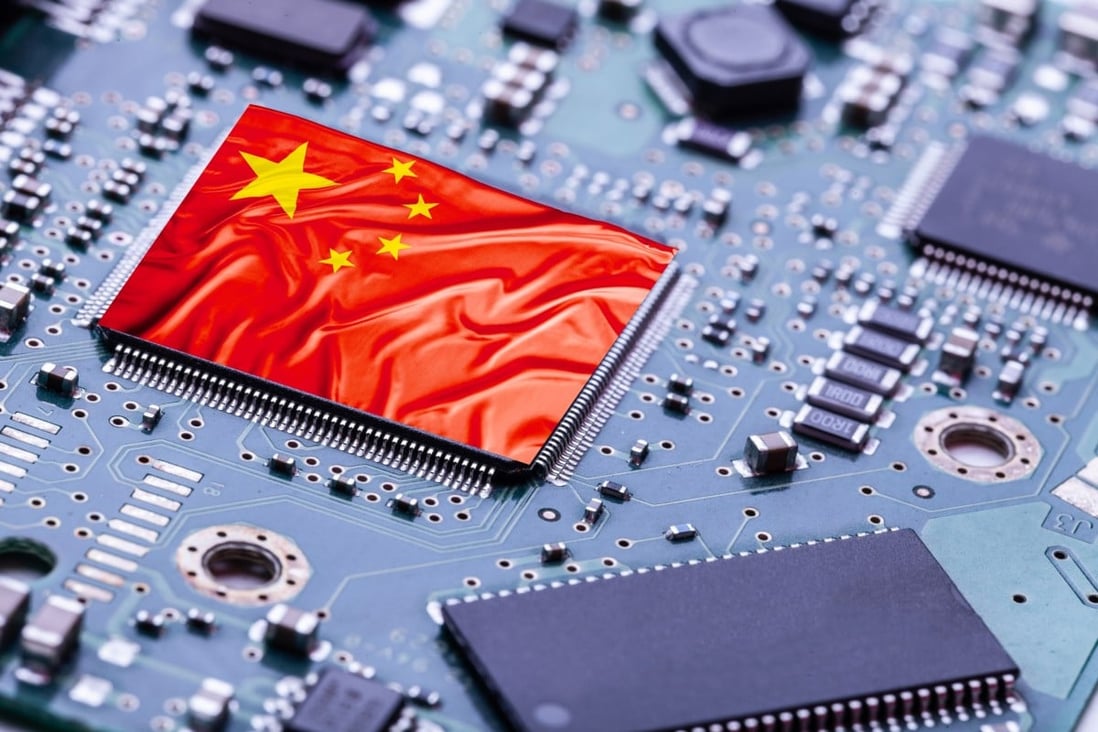Ann Cao

China’s monthly semiconductor output recorded its biggest ever decline in August, as the government’s crippling zero-Covid-19 policy and a slowing domestic economy continued to weaken consumer spending.
Production of integrated circuits (ICs) last month slumped 24.7 per cent year on year to 24.7 billion units, marking the largest single-month decrease since records began in 1997, according to data released by the National Bureau of Statistics (NBS) on Friday. The IC volume was the lowest on record since October 2020.
That also marked the second consecutive month of contraction for the domestic semiconductor industry, which saw its output shrink 16.6 per cent to 27.2 billion units in July.
By contrast, there was a brief rebound in June and May when manufacturing activity started to recover after Covid-19 lockdowns eased in Shanghai, home to many electronics assembly plants, and other production areas in the Yangtze River Delta.
China’s monthly semiconductor output rose in June and May when production reached 28.8 billion units and 27.5 billion, respectively. Photo: Shutterstock
For the first eight months of the year, China’s total IC output was down 10 per cent from a year ago to 218.1 billion units, data from the statistics bureau showed.
The decline in August reflected the continued pressure on China’s manufacturing sector, as economic headwinds combined with fresh coronavirus outbreaks and heatwave-induced power shortages to disrupt production and depress consumer sentiment.
In August, domestic manufacturing activity contracted for the first time in three months, according to the Caixin/Markit manufacturing purchasing managers’ index (PMI) survey. It said the PMI slid to 49.5 in August from 50.4 in July. The 50-point mark in PMI separates growth from contraction on a monthly basis.
The latest chip output data also echoed the sputtering condition of the country’s semiconductor self-sufficiency drive, as the investment frenzy in the sector has cooled off.
A record 3,470 companies – including entities that use the Chinese word for “chip” in their registered names, brands or operations – went out of business in the first eight months of the year, according to statistics from business database platform Qichacha.
Still, another set of data from the NBS showed modest improvement in China’s economy. Industrial production – a gauge of activity in the manufacturing, mining and utilities sectors – grew 4.2 per cent year on year in August.
Beyond domestic challenges, the sense of urgency in China’s semiconductor sector has intensified amid recent efforts by the US government to boost America’s hi-tech advantage over the world’s second-largest economy.
In August, Washington banned Nvidia and Advanced Micro Devices from selling advanced chips used for artificial intelligence and high-performance computing work to China. That was initiated a few weeks after US President Joe Biden signed into law the Chips and Science Act, which provides nearly US$53 billion in semiconductor production incentives on American soil.
No comments:
Post a Comment